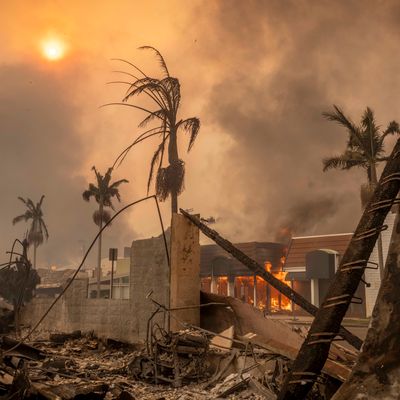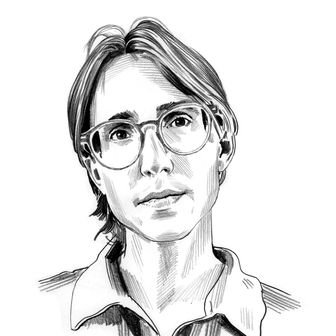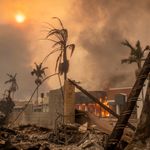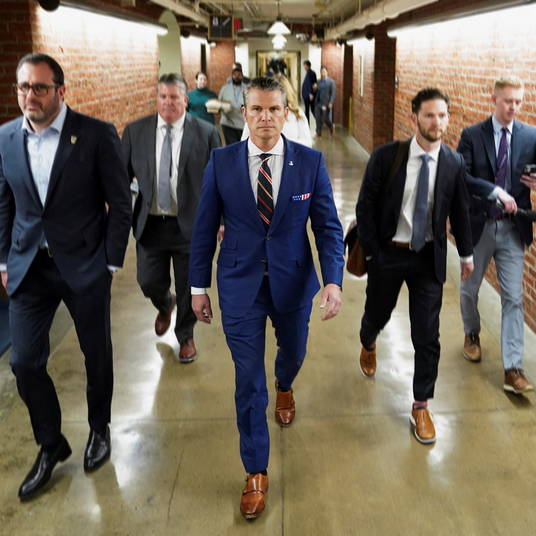
The Los Angeles wildfires are still far from completely contained. But even as swaths of the city remain under threat for at least a few more days, it’s hard not to wonder what comes next. How will insurance companies, already hesitant to provide coverage in fire-prone neighborhoods, respond to the multibillion-dollar disaster? Is it even possible to lessen the inherent risk of building in the hills surrounding Los Angeles? What can L.A.’s (and the rest of California’s) politicians do as they prepare to deal with a hostile incoming presidential administration? To help understand how the city got here and where it might be going, I spoke with Char Miller, a professor of environmental history at Pomona College. Miller is the author of Burn Scars, a history of wildfire suppression in the United States.
You’ve said that this catastrophe was “entirely foreseeable.” When were the seeds sown?
More than a hundred years ago. That’s when well-enough-off Angelenos started moving into Pasadena and its low foothills and what would become Altadena. Because they had cars, they could move into landscapes that we now know better than they did were fire zones. If you take that path forward in time, every time Los Angeles expanded outward, its periphery extended from one valley to another. Each expansion included another set of foothills, canyons, and ridgelines that began to be occupied. And every time people moved up into the hills, fire erupted.
That’s essentially because we bring fire with us. That includes cigarettes, charcoal briquettes, and even more, cars backfiring. Cars are the engine of mobility but also a dangerous thing in terms of fire ignition. Later, the fires came through electricity sparking from the wires. Where we build produces the conditions for where fires erupt.
What about the winds that have been the primary driver of these fires?
We’ve had Santa Ana winds for millennia. The dilemma is that that climatic condition combined with drought, which we always have, collides with the human geography of people living in fire zones. The outward surge of population, which is now a century long, has led to these very dangerous large fires that are essentially structure fires, not wildfires.
But aren’t these fires burning in thousands of acres that are not residential as well?
What the firefighters want to do is to basically herd the fire into those wildlands away from structures, which is what they’re also doing in Altadena and Pasadena. You protect the structures as best you can, then you give nature a push to burn those wildlands. Because, in fact, they need fire to survive.
Is this a worst-case scenario for a fire in Los Angeles? If not, what does that look like?
I think it’s often talked about now as a worst-case scenario, because of the intensity of the Santa Ana wind event. When you’ve got winds 50, 60 miles an hour that are sustained, then gusts up to a hundred miles an hour, there is no way you can fight that fire. Absolutely none. Aerial attack is grounded when winds are over 40 miles an hour.
There’s an adage that I learned from an incident commander, which is: “At ten miles per hour, I’m a firefighter. At 30 miles per hour, I’m an observer.” And we saw that Tuesday night there could be no planes flying. Boots on the ground were doing heroic work but couldn’t do much. Another incident commander told me that at 60 miles per hour, you’re a wind sock.
There’s nothing that could have stopped this fire. I don’t care how many fire engines you might’ve had, how much water might’ve been at your disposal. This thing was moving way too fast, and every firefighter was fighting as hard as they could. Add to that the topography of the Palisades is brutal, absolutely brutal. Some of the steepest slopes you’ll find anywhere, which made for great vistas overlooking the Pacific, were also really deadly landscapes in terms of fire. There is a dilemma in terms of water pressure. They were fighting so many structure fires in the lower elevations and at sea level along the Pacific Coast Highway that there wasn’t enough water to pump up to higher elevations in the Palisades. They couldn’t get there on the ground, and they couldn’t fly in because of the winds.
Could this be the event that prompts some rethinking about building back neighborhoods in the hills?
We have had megafires in Los Angeles for years, and after every fire, people want to rebuild their homes. That is going to be the impulse. But that impulse runs into two issues. The first is whether insurance companies will now underwrite the reconstruction process. And that matters because you can’t get a mortgage if you don’t have insurance. The second is: Should the county and city allow reconstruction? If I had a magic wand, I would suggest that the county, city, and state consider the possibility of creating a policy that would buy land from willing sellers so that they can get some assets out — then stop building on the land. If you think the policy of green-lighting development is a bad idea because of this fire, then flip the policy.
Is that feasible that a city would actually hold off on rebuilding?
For years, I lived in San Antonio, which is a flood-prone city. Beginning in 1999, the city and Bexar County began a template for what I think California could do. They built it into the budget to buy people out from the floodplains. And it turns out people were eager to be bought out.
They understood, as did the county and city, that this is a health and safety issue. California real estate is way more expensive than San Antonio, but the principle still works. Buy people out from willing sellers and begin to ratchet up safety as your top priority rather than growth.
That’s my hopeful vision. The reality may be, as every other time this has happened, that insurers will fund and underwrite, and cities will bless the reconstruction.
How will the billions in damages affect the already-embattled insurance market in California?
This is a catalyzing moment for insurance companies. They’ve already become very reticent to underwrite homes in California in what we all know to be high-severity fire zones. State Farm and others, in fact, actually pulled out of the state only to come back in. This is the moment in which they’re going to hit $50 billion. That’s the estimate right now for the damage done to residences. How ironic that it may be capitalism and not politics that changes the nature of growth in this American city.
What immediate lessons can Los Angeles and California take from this?
There’s the question of insurance companies and how or if they’re going to underwrite reconstruction. But there’s also the political institutions — the city of Los Angeles, the county of Los Angeles, and the state of California. Will they require new building codes that would limit reconstruction to such an extent that we might in fact be able to pull people to safety as opposed to putting them in danger?
I understand the impulse to live in the Palisades or Edna or Pasadena. There are gorgeous views. It is beautiful terrain. But they are also high-intensity fire zones. So either one accepts that risk, or you diminish that risk by choosing to live somewhere else. For me, it would be better if the policy response followed the adage of “build up, not out.” So building in high density away from fire zones, not sprawling into them.
This interview has been edited for length and clarity.





























